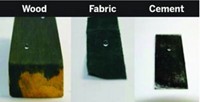Advertisement
Grab your lab coat. Let's get started
Welcome!
Welcome!
Create an account below to get 6 C&EN articles per month, receive newsletters and more - all free.
It seems this is your first time logging in online. Please enter the following information to continue.
As an ACS member you automatically get access to this site. All we need is few more details to create your reading experience.
Not you? Sign in with a different account.
Not you? Sign in with a different account.
ERROR 1
ERROR 1
ERROR 2
ERROR 2
ERROR 2
ERROR 2
ERROR 2
Password and Confirm password must match.
If you have an ACS member number, please enter it here so we can link this account to your membership. (optional)
ERROR 2
ACS values your privacy. By submitting your information, you are gaining access to C&EN and subscribing to our weekly newsletter. We use the information you provide to make your reading experience better, and we will never sell your data to third party members.
Polymers
New Easy-To-Clean Membrane Separates Oil From Water
Materials: A self-cleaning polymer coating could be a new tool for fighting oil spills
by Prachi Patel
September 1, 2015

A steel mesh with a novel self-cleaning coating can separate oil and water, easily lifting oil from an oil-water mixture and leaving the water behind (ACS Nano 2015, DOI: 10.1021/acsnano.5b03791). If the coated mesh gets contaminated with oil, it can be simply rinsed off with water and reused. The new membrane promises to be a practical technology to clean up oil spills, its developers say.
Emergency responders typically fight oil spills by burning, using booms and skimmers, or releasing chemical dispersants. Oil-water separation membranes would be faster and more effective. Although various types of membranes have been studied, they aren’t practical yet, mainly because they are easily contaminated with oil, which renders them useless, says Xiaokong Liu, a polymer chemistry and surface science researcher at the University of South Australia.
Oil-water separation membranes fall into two categories. One is a water-repelling membrane that selectively lets oil seep through. Over time, this type gets clogged with oil and loses its effectiveness. The other, more common type of membrane loves water and repels oil when it is already wet, preventing oil from crossing. This type has to be completely wetted before it can be used. If oil touches it when it’s dry or partially dry—which happens easily in an oil-spill environment—it loses its oil-water separation ability and must be cleaned using detergents.
Liu and his colleagues made a membrane of the second hydrophilic type, but with a key improvement that makes it more practical: Theirs can be quickly cleaned of oil contamination simply by water rinsing, which also means it doesn’t need to be wetted carefully before use.
The researchers prepared the membranes by coating a stainless steel mesh with a phosphorylcholine-based polymer. Phosphorylcholine is a functional group at the surface of cells, linked to the ends of the biomolecules that form cell membranes. It is composed of a negatively charged phosphate group linked to a positively charged choline group. Such dual-charged, yet neutral, molecules, called zwitterions, have an exceptionally strong affinity for water. In biological systems, phosphorylcholine creates a water barrier layer at a cell’s outer surface that keeps the surface from getting fouled.
This strong affinity for water gives the phosphorylcholine-based polymer coating its self-cleaning ability because, unlike most other surfaces, it will expel any oil stuck to it when it comes in contact with water.

To demonstrate the coating’s oil-spill cleaning ability, the researchers covered the bottom of a plastic tube with the membrane. They immersed the tube into a beaker of water with a 4-cm-thick petroleum layer floating on top. As they lower the tube, petroleum flows through the membrane, filling the tube. Although the mesh gets fouled when passing through the petroleum, once it hits the water, the oil comes off, and water soaks the membrane. That restores the membrane’s oil repellency, keeping the oil inside the tube but allowing water to pass. As the researchers lift the tube, a 4-cm-high oil column is lifted out.
The team was also able to lift crude oil from a crude oil-seawater mixture, showcasing the feasibility of oil-spill cleanup. Other than oil spill remediation, Liu says that the membrane could be used to treat oily wastewater and as a protective barrier in industrial sewer outlets to avoid oil discharge. In all cases, after use, the membrane could be rinsed clean with just water.
Rong Yang of Massachusetts Institute of Technology says that this is the first time self-cleaning zwitterionic coatings have been tested to lift oil from oil-water mixtures. Her concern is that the complicated synthesis method used to link the zwitterionic polymers to the steel surface might not be economically viable for large-scale production. Nonetheless, says Zhiguang Guo of the Chinese Academy of Sciences, “this work has solved an imperative challenge in the field of oil-water separation.”




Join the conversation
Contact the reporter
Submit a Letter to the Editor for publication
Engage with us on Twitter